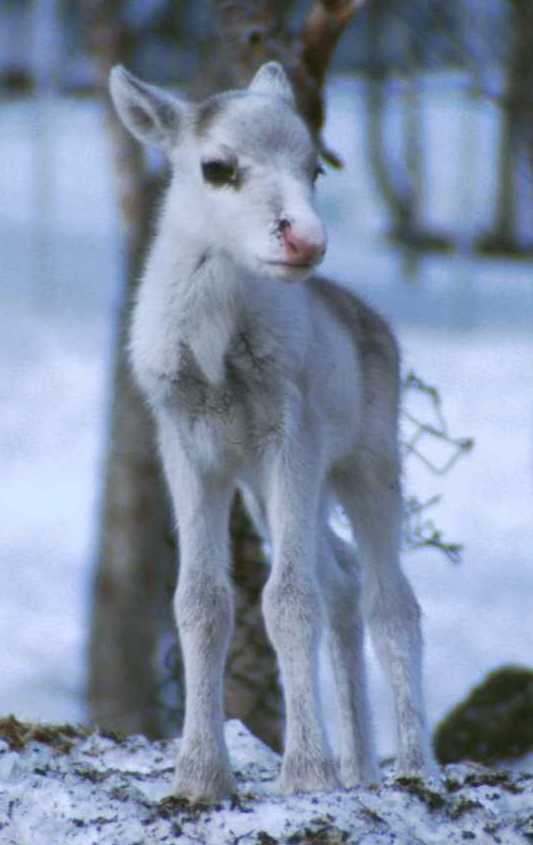| Reindeer
Reindeer is the most abundant large herbivore in the circumpolar arctic and sub-arctic regions. There are both populations of wild and semi-domesticated reindeer. In most cases the semi-domestic reindeer share the major ecological characteristics of wild reindeer. For instance, they both forage on natural pastures and are migratory in the sense that they move from summer coastal pastures to continental inland pastures in the winter. This migratory pattern is mainly related to seasonal differences food plant availability; inland pastures with a shallower and softer snow pack than along the coast provide better access for lichens and other food plants in the winter, while coastal areas provides most richer and more diverse green vegetation during summer. |
|
Semi-domestic reindeer and reindeer husbandry is central research topics in the Ecosystem Finnmark. Finnmark harbors presently ~ 170,000 reindeer and we have found that this conforms to the notion “deer overabundance” with strongly density-dependent production, increased vulnerability to climate impacts and predation (Fauchald et al. 2004, Tveraa et al. 2003, 2007).On the other hand parasitism by warble flies is not increased by reindeer density, in fact, rather the opposite is the case (Fauchald et al. 2007). We are presently conducting in more depth studies on density-dependent effects on reindeer demography and production using by large-scale quasi-experimental studies (see study design) and data collected from slaughter houses. We also conduct experimental studies on reproductive allocation (Fauchald et al. 2004, Bårdsen et al. in press) and habitat use in selected herds. The overarching goal of these reindeer studies is to provide results that may enable herders and managers to devise better harvesting strategies. Combined with social science studies on reindeer husbandry and management examining the economic, social and political drivers of reindeer density variation in time and space makes Ecosystem Finnmark an interdisciplinary enterprise that may contribute to a more ecologically and economically sustainable reindeer husbandry . |
 |
In Ecosystem Finnmark we conduct several studies that highlight the impact of reindeer and reindeer overabundance on ecosystem structure and dynamics. The claim that reindeer overabundance in Finnmark induces an “ecological catastrophe” (Moen and Danell 1999) calls for such studies. More about the ecosystem impact studies can be found under the following key-word: scavenging , predators and predator-prey interactions, vegetation, plant-herbivore interactions and trophic cascades |
|